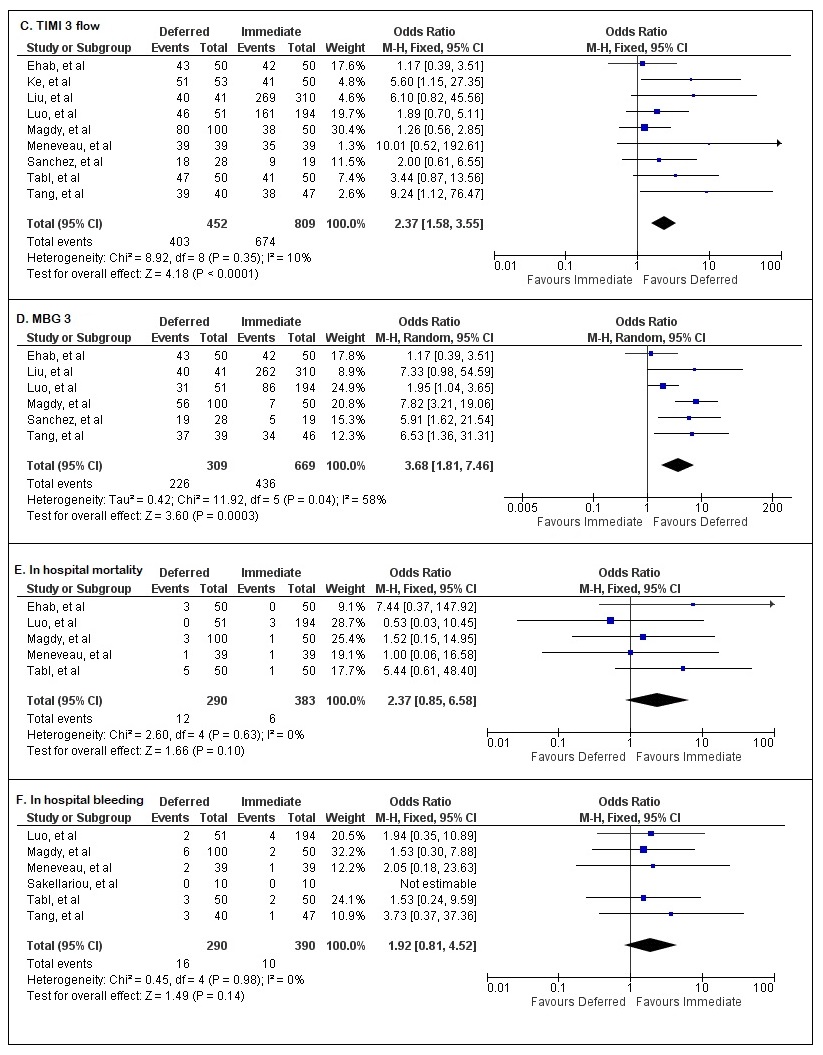Lots of interesting abstracts and cases were submitted for TCTAP 2023. Below are the accepted ones after a thorough review by our official reviewers. Don’t miss the opportunity to expand your knowledge and interact with authors as well as virtual participants by sharing your opinion in the comment section!
TCTAP A-016
Immediate Versus Deferred Stenting for ST Elevation Myocardial Infarct With High Burden Thrombus: A Meta-Analysis From Different Perspective
By Hendy Bhaskara Perdana Putra, Noer Halimatus Syakdiyah, Yusra Pintaningrum, Maria Adventia Debi Mustika Martin
Presenter
Hendy Bhaskara Perdana Putra
Authors
Hendy Bhaskara Perdana Putra1, Noer Halimatus Syakdiyah2, Yusra Pintaningrum3, Maria Adventia Debi Mustika Martin1
Affiliation
Dr. Ramelan Navy Hospital Surabaya, Indonesia1, Airlangga University, Indonesia2, Mataram University, Indonesia3
View Study Report
TCTAP A-016
Acute Coronary Syndromes (STEMI, NSTE-ACS)
Immediate Versus Deferred Stenting for ST Elevation Myocardial Infarct With High Burden Thrombus: A Meta-Analysis From Different Perspective
Hendy Bhaskara Perdana Putra1, Noer Halimatus Syakdiyah2, Yusra Pintaningrum3, Maria Adventia Debi Mustika Martin1
Dr. Ramelan Navy Hospital Surabaya, Indonesia1, Airlangga University, Indonesia2, Mataram University, Indonesia3
Background
Immediate coronary stenting remains a cornerstone in the last guideline of management ST segment elevation myocardial infarction (STEMI). In the other hand, deferred stenting had shown no significant clinical benefit in several RCT in general population. Several studies have compared deferred stenting to immediate stenting in special population with high burden thrombus. However, the result remains inconclusive.
Methods
We performed a systematic literature search from several electronic databases. We used keyword “deferred stenting” or “delayed stenting” and “high burden thrombus”. The inclusion criteria were studies comparing immediate stenting and deferred stenting in STEMI patients who underwent primary PCI, either randomized or non – randomized was accepted. The primary endpoints were distal embolization and no/slow - reflow. Secondary endpoints were TIMI 3 flow, myocardial blush grade (MBG) 3, in - hospital mortality and in – hospital bleeding. Odds ratio (OR) with 95% confidence intervals (CIs) were used to report all outcomes.
Results
A total of ten studies were selected with 1.281 patients were pooled in our analysis. 462 patients in deferred stenting group and 819 patients in immediate stenting group.Compared to immediate stenting, deferred stenting in STEMI patients with high burden thrombus significantly reduce distal embolization (OR=0.29 [95% CI, 0.16-0.53], p<0.0001) and no/slow reflow phenomenon (OR=0.42 [95% CI, 0.26-0.68], p=0.0004). At the other side, deferred stenting significantly increases TIMI 3 flow (OR=2.37 [95% CI, 1.58-3.55], p<0.0001) and MBG 3 (OR=3.68 [95% CI, 1.81-7.46], p=0.0003). However, there were insignificant increase of in - hospital mortality (OR=2.37 [95% CI, 0.85-6.58], p=0.10) and in – hospital bleeding (OR=1.92 [95% CI, 0.81-4.52], p=0.14).




Conclusion
Deferred stenting in STEMI patients with high burden thrombus, not only significantly reduce distal embolization and no/slow reflow phenomenon, but also significantly increases TIMI 3 flow and MBG 3.


